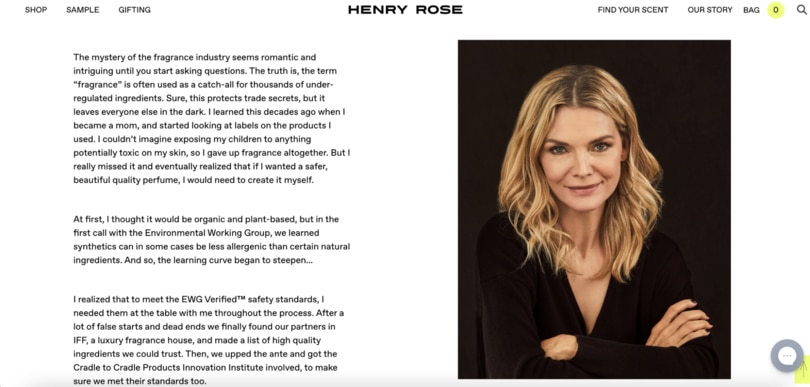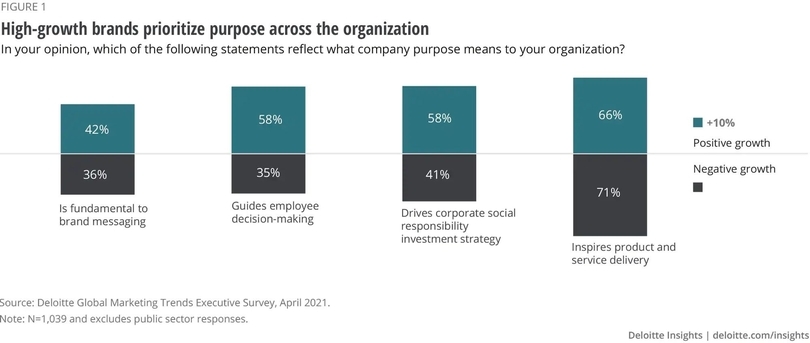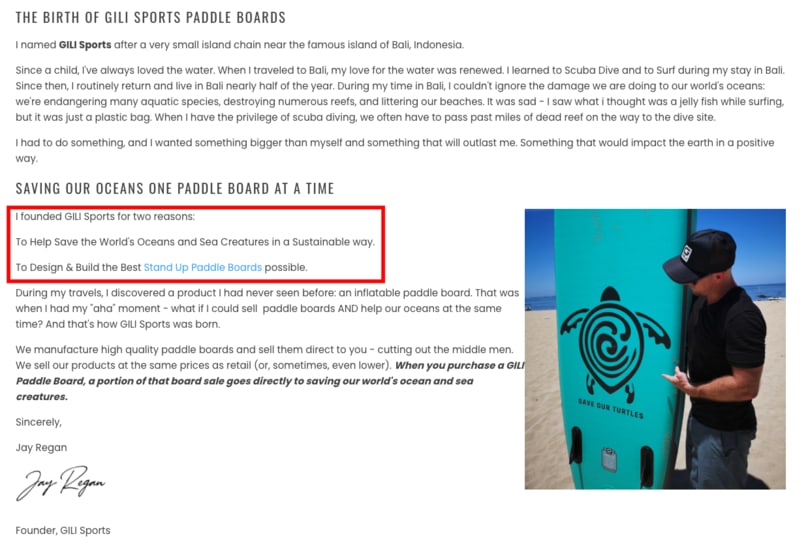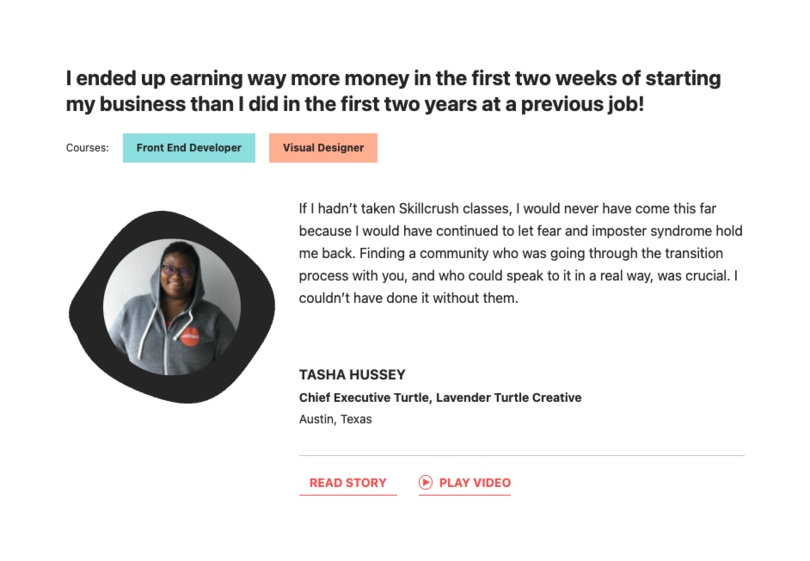Hello!
What makes people choose one brand over another?
 Research from December 2021 confirmed what most marketers already know: the majority of consumers (almost 70%) will prioritize getting the best deal when shopping for products and services. But, it turns out that price is not the only factor directing consumer behavior.
Research from December 2021 confirmed what most marketers already know: the majority of consumers (almost 70%) will prioritize getting the best deal when shopping for products and services. But, it turns out that price is not the only factor directing consumer behavior.
Since the Covid-19 pandemic, people have started making more value-based shopping decisions than ever. In 2021, consumers wanted to support brands that were sustainable, committed to supporting local communities, treated their employees well, and were transparent about their production practices.
And though these points might seem like straightforward instructions on what organizations need to do to appeal to the contemporary consumer, they’re also a strong signal of something else. They show how important it is for brands to direct their branding with competence and warmth in mind.
In other words, these consumer priorities testify to the importance of building human brands.
So what tactics can you employ for humanizing your brand in 2022? Let’s find out.
Define Your Personality & Let It Shine
 Perhaps the most impactful action you can take to humanize your brand is to define what it stands for. Then, once you have a complete personality, you can govern all your (online and offline) marketing actions in a way that reflects and supports that personality.
Perhaps the most impactful action you can take to humanize your brand is to define what it stands for. Then, once you have a complete personality, you can govern all your (online and offline) marketing actions in a way that reflects and supports that personality.
One mistake that commonly creeps into most branding strategies is that a reliable, professional, and user-oriented organization has to be dull and use a somber voice. But that’s not true.
Experience has shown that adopting a quirky stance, a strong voice, and even being a bit blasé about the way you communicate with your customers can be much more authentic than following the rules of “proper conduct.”
Just look at how well dbrand does it. Its voice is quirky, uncensored, and sometimes just a tad too much. But it’s authentic. And more than 1.9 million followers support the company on Twitter, showing that the out-there marketing approach does more than just attract attention. There’s actually something relatable to it as well.
Introduce Your Team
The most successful brands of the last century are, in part, recognized because of the people who stand behind them.
Apple can thank its success to Steve Jobs’ commitment to building “tools that can dramatically amplify [our] human ability.” Tesla is defined by Elon Musk’s dedication to disruptive innovation. And with KFC, the person behind the brand even became its mascot and logotype, showing just how much personality can help a business distinguish itself.
Considering this, it’s easy to conclude that a super-effective tactic you can use to help your brand be more human is to put some faces behind the name.
 You can do things traditionally and use the About Us page on your website to accomplish this. You can use these pages to tell your business’ story, explain your reasons for founding the company, and even share personal experiences that will make your brand more relatable.
You can do things traditionally and use the About Us page on your website to accomplish this. You can use these pages to tell your business’ story, explain your reasons for founding the company, and even share personal experiences that will make your brand more relatable.
This is what Michelle Pfeiffer did with the Henry Rose company, introducing her motives for starting the business and highlighting the team members who helped her create the products.
But, if you want to go a step further, it’s also not a bad idea to experiment with alternative storytelling methods that describe your team. Impossible, for example, made sure to include videos from its successful YouTube channel on its About page, knowing that the absolute best way to humanize the brand was to show its founders in action.
Be Clear About What You Want to Achieve
 Another excellent way to make your brand relatable is to be proactive about guiding your business decisions based on brand values.
Another excellent way to make your brand relatable is to be proactive about guiding your business decisions based on brand values.
This is fully supported by Deloitte’s 2022 Global Marketing Trends Report, which found that 66% of high-growth brands were more likely to guide employee decision-making based on purpose.
Knowing this, you can successfully help your brand become more relatable.
 For example, you can be more vocal about your brand’s mission, like GILI Sports. On the website’s Mission page, the brand’s founder states how important it is for the brand to be sustainable and help the environment. And, by making the brand’s purpose clear, GILI is successfully making itself more relatable, as environmentalism is a cause that a large number of paddleboarding enthusiasts support.
For example, you can be more vocal about your brand’s mission, like GILI Sports. On the website’s Mission page, the brand’s founder states how important it is for the brand to be sustainable and help the environment. And, by making the brand’s purpose clear, GILI is successfully making itself more relatable, as environmentalism is a cause that a large number of paddleboarding enthusiasts support.
Practice Transparency
Showing that your business has soul and is not just another corporation trying to get money out of consumers can be a challenging task. Implementing the strategies we’ve talked about so far can definitely help you get started. But even once you apply these tactics fully, there’s still a missing link preventing you from humanizing your brand: transparency.
You see, any action that builds mystery around the workings of a business effectively makes that business less human. Fortunately, the solution is simple. All you have to do to humanize your brand is to be open and honest about the things your audience cares about.
For some businesses, this will mean being transparent about production practices.
Hyer Goods is an excellent example of a transparent brand in the fashion industry. Take a look at the brand’s in-depth explanation of the type of leather it uses to build its products. Additionally, it goes a step further in introducing its leather factory in a video that’s linked on every single product page. That way, they inform their visitors about what type of production operation they’re supporting by shopping with the brand.
Take Your Social Proof to the Next Level
You’re likely to already know the impact social proof has on consumer behavior. The latest surveys show that as many as 99.9% of consumers read reviews when shopping online. Moreover, 98% consider ratings before making purchasing decisions.
 But sometimes, merely showing star ratings and reviews isn’t enough to show your brand as a relatable entity dedicated to helping people solve their pain points. After all, numbers may testify of your company’s competence levels. But, they don’t say much about its warmth.
But sometimes, merely showing star ratings and reviews isn’t enough to show your brand as a relatable entity dedicated to helping people solve their pain points. After all, numbers may testify of your company’s competence levels. But, they don’t say much about its warmth.
For this reason, when looking for ways to humanize your brand, it’s important to allow ample space for your customers to speak in their own voices. In addition to allowing them to write in-depth reviews and submit user-generated content, consider whether sharing their stories may help you show your organization’s human side.
Skillcrush does an amazing job of displaying social proof in a way that boosts the brand’s humanity. The brand’s testimonials page focuses on individual customer stories. It underlines that Skillcrush is not just a learning platform but a community of students and mentors who are deeply devoted to helping each other learn, thrive, and achieve success in the tech world.
Invest in Community Building
Connection is built through communication. And what better way to encourage your customers to get in touch (and to see you as more than just a business) than to invest in spaces that drive conversations?
 In 2021, people spent an average of 142 minutes per day browsing social networks. That’s why using social media for community building is an excellent tactic for establishing closer relationships and humanizing your brand.
In 2021, people spent an average of 142 minutes per day browsing social networks. That’s why using social media for community building is an excellent tactic for establishing closer relationships and humanizing your brand.
Some brands, like Peloton, do this by creating dedicated groups on Facebook where users can get in touch with brand representatives to ask for help or advice. Others take a slightly different approach by inviting followers to get in touch and share their experiences.
Bay Alarm Medical, a brand that caters to senior citizens, does this by actively working to meet people from the community, listening to their stories, and providing them with a platform where they can share their experiences. The company’s Instagram profile is filled with heartwarming and inspirational stories from seniors and their caregivers. It shows that the brand isn’t only focused on selling a product. Much more than that, the Instagram profile represents a testimonial of the Bay Alarm Medical team’s mission to help seniors live fulfilled lives without having to worry about their health or safety.
Don’t Ignore the Negative Things
To err is human. So, if you find yourself in a situation that suggests less-than-ideal performance from your team, make sure that you face the problem head-on, as KFC did back in 2018.

 Addressing arising issues is not just an excellent strategy for humanizing your brand. It also helps you manage the overall customer experience by being proactive about continually providing high-quality service.
Addressing arising issues is not just an excellent strategy for humanizing your brand. It also helps you manage the overall customer experience by being proactive about continually providing high-quality service.
If you want to make your brand more relatable and human, make sure that you reply to any negative reviews, let your customers know if any issues might affect their experience, and take note of the criticism you receive. After all, nothing says “we’re here and we’re listening” better than giving people what they want – whether it’s by releasing requested firmware updates or allowing customers to submit product ideas, as Lego does on its website.
Drive Success by Humanizing Your Brand
 Creating a brand people care about is not an easy task. It requires hard work, innovation, luck, and a killer digital marketing strategy.
Creating a brand people care about is not an easy task. It requires hard work, innovation, luck, and a killer digital marketing strategy.
However, the one thing you can easily commit to (that’s bound to deliver results) is making your brand human.
The seven tactics covered in this article are all super-effective at showing the soul behind your brand. So don’t hesitate to implement them on your distribution channels.
Of course, remember: for any marketing tactic to resonate, it must come from an honest place. So don’t try to make your company more relatable by sending messages that don’t match your brand’s personality. Sure, it might provide some short-term gains. But in the long run, it will only alienate your ideal target audience. And that’s not a trade-off worth making for a slight bump in your conversion rates.
Thank you!
Subscribe to our newsletter! Join us on social networks!
See you!






